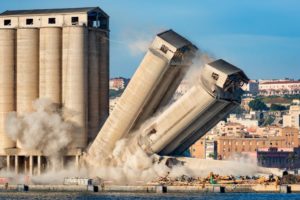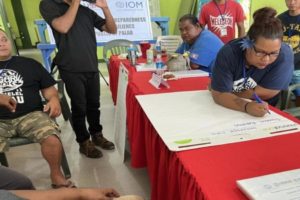
Disasters unfold across national boundaries, involving a range of interrelated hazards and complex dynamics. To tackle disaster risks and build resilience in the face of increasing climate-related disasters, it will require a united effort to move beyond working in silos.
“Member states, the UN system, governments – whether national, local or community-level governments – will need to learn more and more how to work in an interdisciplinary manner,” said David Smith, coordinator of the Institute for Sustainable Development at the University of the West Indies, and moderator of the session Breaking the Silos – Towards multi-hazard, multi-sectoral approaches to managing risks at the 7th Global Platform for Disaster Risk Reduction.
“One ASEAN, one response”
Southeast Asia and the Pacific region are especially affected by natural hazards, and in recent years has been the site of numerous disasters – cyclones, floods, tsunami and seismic events, compounded by the COVID-19 pandemic. Susana Juangco, Director of the Philippines Office of Civil Defense, explained how ASEAN, the Association of Southeast Asian Nations, has taken steps towards better coordination in its disaster risk reduction (DRR) strategies.
“The disaster risk landscape is becoming more complex and challenging,” she said. “There is a need to strengthen and broaden cooperation, not only within the ASEAN region but also externally, including with non-traditional partners.”
One example is the ASEAN Joint Taskforce on Humanitarian Assistance, which draws in expertise from many sectors – political, defence, health, social welfare and development.
“Disaster management should be everyone’s business,” she said, “Instead of working in silos, inter-operativeness and coordination should be the essence of all our DRR initiatives.”
Understanding risk from community viewpoints
Bijay Kumar, Executive Director of the Global Network of Civil Society Organisations for Disaster Reduction (GNDR) described how an inclusive, community-based approach can strengthen DRR and resilience building by drawing on local perspectives.
“As a global network… we are trying to see how risks are understood from the perspective of the people experiencing them.”
A GNDR programme has examined how communities have been included in various governance systems, and how this inclusion has changed over a ten-year period, drawing on the experiences of representative samples of communities across 48 countries worldwide.
In Indonesia, for example, the study found that a consultative process helped to activate a penta-helix approach involving local governments, civil society, academia and the media in developing plans which were then taken up at a national level.
“It is possible to bring a comprehensive analysis to inform a sustainable way of building resilience,” he noted.
Finding the right tools for the job
Scientists have a range of tools at their disposal for assessing disaster risk. There are well-established methods for assessing primary impacts from external shocks, but in many of the places that experience disasters, data is often in short supply. However, when it comes to assessing systemic risks and the complex dynamics that cause wider impacts, there are fewer options.
Olaf Neußner, an independent expert for the German Committee for Disaster Reduction (DKKV) believes that recent global events – the pandemic and the war in Ukraine – could help to break down silos between different avenues of research, and create new opportunities for risk analysis.
“There is a lot of information available, and researchers can look into this and see what the cascading effects actually are,” he said.
In order to process the enormous volume of data, risk assessments could draw on machine learning and artificial intelligence to better understand causal relationships and connections between hazards and impacts.
Economic models could also be useful in understanding the socio-economic impacts of disasters – this requires that the two silos of economic and DRR analysis are bridged.
“Breaking silos takes time and energy, but it is worth it.”
Peter Binder, Director-General of MeteoSwiss and the Swiss Permanent Representative to the World Meteorological Organisation (WMO), offered examples of how DRR initiatives in Switzerland have deliberately set up structures to break down silos.
This entailed establishing the Steering Committee on Intervention in Natural Hazards, which brings together government and academic institutes dealing with weather, fire, civil protection, seismic events, avalanches and topography. The Committee operates on three hierarchical levels, each involving all of the parties.
A similar collaborative approach is applied by the National Centre for Climate Services, bringing together seven federal offices with academic institutions.
“Breaking silos takes time and energy, but it is worth it,” he said.
An earth system approach
At an international level, Binder noted that the WMO – with responsibility for weather, water and climate – provides another example of breaking silos.
“The three disciplines are intimately linked in nature and, therefore, should also be in our scientific and operational treatment,” he said. “This is the earth system approach, indispensable for managing multi-hazard risk.”
Switzerland is promoting an initiative to take this further, to bolster global preparedness for natural hazards.
Under the WMO Coordination Mechanism, “all available authoritative information on meteorological and hydrological threats from WMO members should be directed into the information channels of the pertinent UN and humanitarian aid organisations. This constitutes a multi-organizational and multinational effort to mitigate risk related to meteorological, hydrological and climate hazards,” he said.
[Source: UNDRR]



